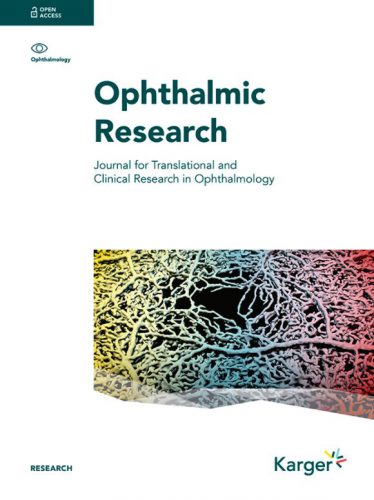Flipping our journal Ophthalmic Research in 2021 has proven to be anything but shortsighted. We kicked off our own Open Access Week with an internal event, a Best-in-Class example, and a pub quiz.
The journal’s success as one that “flipped” – that is, converted – from the subscription business model to Open Access (OA) shows that OA was clearly the right move, as Editor-in-Chief Dr. Hendrik Scholl told staff during a company event for International Open Access Week. Dr. Scholl is currently the director of the Institute of Molecular and Clinical Ophthalmology Basel (IOB) and Chair of the Department of Ophthalmology of the University of Basel, with an array of international experience in the field.

Ophthalmic Research
During OA Week, academic and research communities around the world engage with OA, and advancing OA is a major priority for us too. So, for the first time, we hosted our own Karger Publishers community event for OA Week with two parts, both virtual: First, in an informal interview, Dr. Scholl shared his experiences helping to lead the journal’s transformation into OA. Next, we employees tested our knowledge and learned more about OA and Open Science in a “pub quiz” competition that was beer-free but fun and challenging.
Reaching More Communities through Open Access
OA is a rapidly expanding way of publishing that makes journal articles immediately and permanently free for everyone to read, share and re-use. Limits on commercial re-use or other restrictions may apply depending on the type of license used. To cover publication costs, authors or their research funders or institutions typically cover the costs of publication, in contrast with the subscription model under which readers pay for access. With OA, many more people can read publications much more quickly, to the benefit of individuals, researchers, practitioners, policy-makers and others.
Flipping is one way to speed up the transition to OA. But it can also carry risks – for example, losing authors who submit papers, as Karger Publishers CEO Daniel Ebneter explained while interviewing Dr. Scholl.
But for Ophthalmic Research, just the opposite happened: The journal was handling a high number of submissions during the pandemic, as many academic publications were. As is often anticipated after flipping, submissions indeed dipped, though the dent was manageable – down to roughly pre-pandemic numbers. After only a few months, however, they had ballooned back to near-record levels. “The outcome was excellent,” Dr. Scholl reported.
Not only did submissions rise, but use of the articles, measured in clicks, soared. That was a more anticipated but no less delightful development – evidence that OA can increase the visibility of articles, allowing research to achieve greater impact.
Such visibility was one of Dr. Scholl’s and his colleagues’ top reasons for making the leap to OA. Another was to be a leader in the ophthalmology subject area, in which only about 20% of journals were fully OA. “Flipping to OA would mean we would join that… forefront of journals that would be OA. And we felt that would be a competitive advantage.”
To Flip or Not to Flip? Some Advice
What advice might Dr. Scholl have for leaders of journals who are considering flipping to OA? For one, they should be sure to work with a professional publisher they can rely on, with whom there is a good rapport and teamwork, and that has the experience to handle the technical challenges of flipping.
As for concerns that OA may exclude promising authors who can’t afford Article Processing Charges (APCs) – especially in disciplines with less funding – Dr. Scholl pointed out that publishers may have programs to cover those costs. Our program to waive or discount APCs for authors in need gave him confidence that authors submitting a paper with excellent science will have a fair chance to publish it, he said.
Open communication with associate editors and editorial board members is also crucial, Dr. Scholl emphasized. If everyone understands the vision of greater and quicker visibility and other potential benefits from OA, they can better manage to weather any challenges that may come with flipping.
The Need for Speed – and Peer Review
Taking a step back to consider OA and Open Science more broadly, Mr. Ebneter and Dr. Scholl spoke about the trending use of preprints, which are scientific papers before peer review or editing. While speed is generally very welcome, one drawback is the difficulty for scientists to recognize if what they’re reading is validated data. We, the publisher and journal, provide an extremely valuable service, Dr. Scholl said – we give authors feedback and help them improve their work and moreover we produce articles that are not only nicer and easier to digest thanks to services like editing, but also guaranteed to be validated through peer review.
Learn more about Open Access and Open Science.






Comments
Share your opinion with us and leave a comment below!